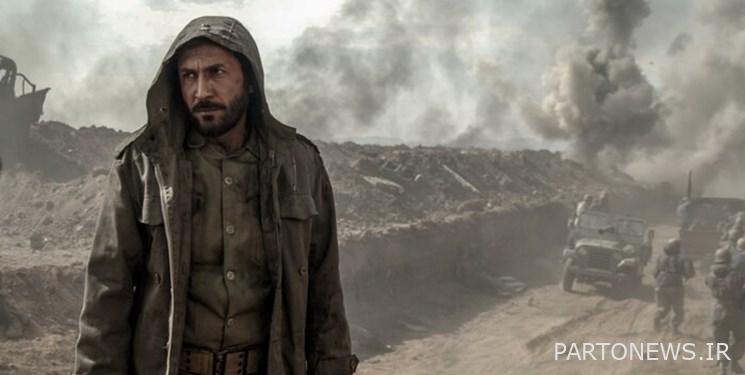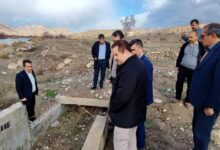Magdasian: “Ashura” was a series about people

According to the reporter of Fars News Agency Radio and TV, the television series “Ashura” directed by Hadi Hijazi Far has depicted a different story of the struggle of martyr Mehdi Bakri, the commander of the 31st Ashura Division and the fighters of this division in the Badr and Khyber operations.
The “Ashura” series, which started airing on August 27, was aired every night on the occasion of the holy defense week, and the last episode was aired last Friday night.
National heroes were people
Mohammad Reza Magdasian, a critic of cinema and television, believes that the national heroes, those who sacrificed their lives to keep this border and land as it is, were from the people themselves. Emphasizing that the genre of the Ashura series belongs to the people, he clarified: the national heroes, that is, those who sacrificed their lives to keep this border and land as it is, were the people themselves. For example, they worked in the office, were students or studied. They offered everything they had to protect the country and the interests of their people. What is recorded in the history of the holy defense and in the memories of the warriors confirms this fact.
In the cinema of Holy Defense, there was an exaggerated approach
Criticizing the exaggerated approach to Holy Defense, Magdasian said: For years, there was an exaggerated approach in the cinema of Holy Defense, and they thought that it would be more effective if they showed the heroes in an exaggerated way. But people know the facts very well and have closely touched the war in the 60s. The warriors were from these people and their children.
He added: What happened in the Ashura series is the drawing of the true, multifaceted and comprehensive character of the war hero for those who did not understand the holy defense closely and did not see that era. One of the advantages of the Ashura series is this point.
For years, there was an exaggerated approach in the cinema of the holy defense, and they thought that if they showed the heroes in an exaggerated way, it would be more effective. But people know the facts very well and have closely touched the war in the 60s
The reality of the atmosphere of the Ashura series
This critic and writer said: Martyrs and fighters were very healthy and zealous people, whose true reward can still be found in cities and villages. The realness of the atmosphere of the Ashura series seems like a simple matter in words, but the work that Hadi Hejazifar and Ebrahim Amini have done as the scriptwriters and directors of the series shows that they have paid great attention to the design of the atmospheres and stories and know the details of the characters of the fighters. have had enough
He clarified: One of the reasons for the success of the Ashura series should be related to its detailed and researched text and the elegance and precision that Hijazifar has spent so that the visual narration method of the work is as close as possible to the remaining documentaries from that era. In addition to the type of coverage, atmosphere creations and situations to get closer to the documentary atmosphere and benefit from the real visual image, Hijazifar also took help from the documentaries left over from the war so that the audience is not faced with a propaganda and slogan film, but sees those that There were those who went to the front, like all members of the society, who were unanimous on the issue of defending the homeland.

Television and introducing people to values
Moghadsian also says about the works and results of the Ashura series broadcast on TV: the truth is that cinema audiences in our country are limited and maybe only five percent of people go to the cinema every year and in the best case. Movies like Mahdi’s situation should be shown more widely so that more people can watch them. Turning these movies into mini-series and broadcasting them on TV can be in line with this goal. In any case, television has more and more diverse audiences than cinema, and basically one of the missions of this mass media is to acquaint people with the values of holy defense. Of course, it should also be kept in mind that broadcasting the television version of movies should not reduce the quality of these works, which fortunately did not happen in the Ashura series, and each episode was produced with high standards compared to other series.
One of the reasons for the success of the Ashura series should be related to its detailed and researched text and the elegance and precision that Hijazifar has spent so that the visual narrative method of the work is as close as possible to the remaining documentaries from that era.
Lack of expert personnel in the holy defense cinema
This film critic also notes about the filmmaking process in the holy defense genre: there are not few films that are produced with a large budget by special institutions and participate in the Fajr Festival, but the question is, do these films have the ability to attract the audience? The fact is that we have several types of holy defense films. A series of films are made with the theme of sacred defense, but they ignore the audience, because the screenwriters and directors of these works are not very capable. In fact, some people accept the order to make these films if they have only produced a work. These people do not have the necessary ability and understanding to make a good film in the genre of holy defense.
He continues: We need expert screenwriters who have a deep, human, historical and multi-layered understanding of the Iran-Iraq war. The result of this understanding is writing a good screenplay that can determine the fate of a movie. Rather than having a weakness in production, we have a lack of skilled workers. We need many and many Ebrahim Amini and Hadi Hejazifar and writers and directors like this so that we can produce lasting films and series in the field of sacred defense. If the audience sees a good war movie, it will be welcomed. In the world, they are still making films about the First and Second World War and the wars in Afghanistan and Iraq, which happen to be well received by the audience.
War heroes are national capital
Magdasian clarifies: Our main problem in the Holy Defense cinema is more related to the lack of skilled labor and the lack of specialists than the budget. If a good film is made in the genre of holy defense, it can even earn its own money at the time of release and from ticket sales.

This cultural expert also emphasizes the need to pay the sacred defense commanders: whether in Iran or in any country, heroes are part of the national capital. These heroes can create cohesion, identity and national solidarity and have an uplifting effect on the society. Most of our cultural managers believe that heroes should be addressed, but the problem is that each of these managers and related groups consider themselves the owners of these heroes and insist on presenting their desired image of heroes to the audience.
People’s reception of holy defense movies
Magdasian states: There should be some kind of national integration in this area and we should go to the national heroes in the right and standard way. It is necessary for every country to care for its heroes. The audience is thirsty to watch these movies and enjoys seeing the works that deal with its heroes.
Referring to the weekly broadcast of the Ashura series, he states: There should be a survey and statistics about the broadcast of such series. Currently, home network platforms offer their series on a weekly basis. In my opinion, broadcasting the Ashura series, which is a laborious and luxurious work, on a weekly basis can be suitable, because it provides the opportunity to promote the series by the audience itself.
In the end, Magdasian emphasizes: Broadcasting series like Ashura can bring back television to its peak days and attract the audience to this visual medium again.
5% of my power is spent on this
Also, Hadi Hejazi Far, after the broadcast of the last episode of the “Ashura” series, participated in the “Hamase Khawan” program and talked about this series. Hijazi Far said about the final quality of the work: To be honest, I am satisfied with the work, but I spent 5% of my intellectual, artistic, focusing on the actor, the text, and 95% of my energy was spent on production. Getting facilities, money, building trust could have been much better and we have many sequences that could not be done due to lack of money. I didn’t expect to be completely trusted in my first job, but I promise you that with this budget spent on this work and with 10 or 20 times the time of work, I’m not talking about quality, but war work is not possible to produce. This product is the dedication of a first class group.
The most famous scene of “Ashura” was filmed with the help of soldiers
He also pointed out that he filmed the most famous scene of the “Ashura” series with the help of conscripts and they played the role of martyrs whose bodies fell in the canal.
The director of the “Ashura” series also said about its story: The film is about Agha Mehdi and Agha Hamid, and the series is about Ashura’s 41st Division. The story is that Agha Mahdi’s philosophy and founder of the Ashura army cannot be separated, and in many stories, Agha Mahdi is missing, but the story goes back to Agha Mahdi.
Real warriors’ clothes on the actors
Hejazifar said that many of the clothes worn by the actors of this series were the real clothes of the soldiers of the imposed war, and even some of them still had blood stains on them.
He also announced for the first time.
The director of the Ashura series also appreciated the efforts of the national media to create and show some scenes of the Khyber and Badr operations and said that if it wasn’t for Mr. Jabali, this series would never have come to an end.
end of message/

